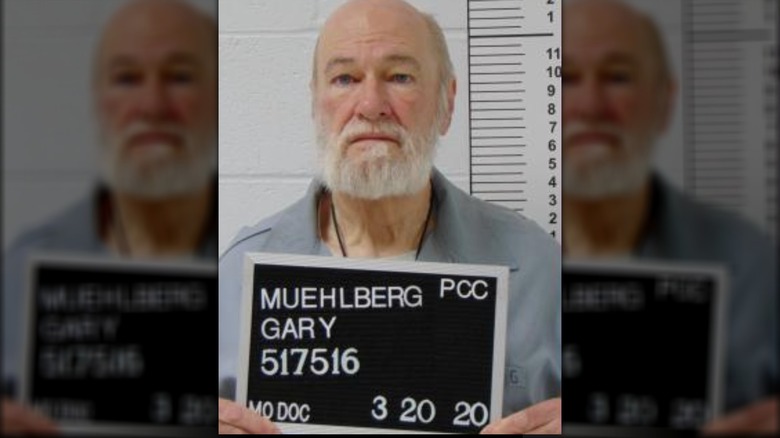How DNA Helped Solve A 1990 Serial Killer Cold Case
If you've watched a lot of police "procedurals," as they're called, such as "Law & Order" or the "NCIS" franchise, you may have gotten the wrong idea about DNA and how it's used to solve crimes. As the U.S. Department of Justice explains, DNA technology has been a boon to law enforcement in two main ways: First, by potentially matching a suspect to a crime through the bits of DNA he or she may have left on the physical evidence; and second, by identifying people who may be related to a person whose DNA was left at a crime scene by accessing genetic databases.
However, as The Atlantic reports, DNA testing is not the be-all, end-all of crime-solving, and in fact, it's only as reliable as the people who use it. For example, an analysis of the Houston Police Department's handling of DNA evidence revealed that police were "routinely misinterpreting even the most basic samples," per The Atlantic.
However, when used properly, DNA evidence can bring justice to people who might otherwise have been deprived of it. And in St. Louis, the cold-case murders of four women were finally solved after decades when DNA technology identified their alleged murderer: a man who was already doing time for an unrelated killing.
The South Side Stroll
St. Louis, like any other city in the U.S., had and has its share of sex workers. And in the late 1980s into the early 1990s, the city's sex workers tended to work in an area in the southern part of the city, identified by the St. Louis Post-Dispatch as the "South Side Stroll."
Unfortunately, as the National Library of Medicine reports, sex workers face an increased risk of violence, significantly higher than the risk faced by women who don't do sex work. Further still, as the Crime Justice Journal explains, police are generally not very good at solving violent crimes involving sex workers for a variety of reasons, not the least of which is that society tends to view such people as "irresponsible citizens." And of course, many such workers, mostly women, are largely forgotten by their families, and their disappearances sometimes go unnoticed.
This toxic stew of sex workers at risk of violence, with little hope of legal remedy, led to at least five women, and possibly several more, being murdered by the same man over the course of a few months in 1990 and possibly into 1991 and later.
The Package Killer
One October Thursday morning in 1990, according to the Riverfront Times, two employees of the suburban community of Maryland Heights were going about their day when they noticed an odd sight: a brown plastic trash bin right there by the side of the street. Then they noticed the smell: putrid and rotten. "What the hell is in this thing?" Alvin Maze reportedly asked. He and his coworker, Andre Jones, then realized to their horror that there was the decaying body of a human being inside.
More bodies would be found, disposed of similarly haphazardly. According to the St. Louis Post-Dispatch, another victim would also be found in a garbage can. Another, concealed in a wooden box, and another, her body sandwiched between two discarded mattresses. All of the female bodies were disposed of more-or-less in plain view, on various roads across the St. Louis area.
According to a companion Riverfront Times report, police concluded that disposing of the bodies in this way was effectively the murderer's way of taunting them. He's playing games with us. Leaving bodies out in the open, and he's doing a good job," one investigator told the Post-Dispatch at the time, via the Riverfront Times. Soon, the murderer was being referred to colloquially as the "Package Killer."
The Victims
The first of the "Package Killer's" victims to be identified, according to the St. Louis Post-Dispatch, was Robyn Mihan. Photos show her as a vivacious and smiling teenager, but unfortunately, she developed an addiction to crack cocaine, her brother said. She turned to sex work to fund her addiction, and by the age of 18 was working the Stroll. Another sex worker was the last to see her alive; hers was the body found stuffed between two mattresses.
The next was Brenda Pruitt, also a sex worker, who hadn't been seen for months until her body was found. When it was found, stuffed into a trash bin, it was so badly decomposed that she wouldn't be identified for another five months. She was 27.
Donna Reitmeyer, 40, was also a sex worker with a drug addiction. She had three children, at least one in their teens, at the time of her murder. Sandy Little was the last victim identified by the Post-Dispatch; she was 21 and had an infant son at the time of her death. There may be another victim, according to the Riverfront Times, as the man who was eventually charged with the murders of these women allegedly confessed to murdering a fifth woman.
The Case Goes Cold
As the Riverfront Times reports, once the murders stopped, almost as quickly as they began, the case almost immediately went cold and dropped out of the collective memory of the St. Louis area.
However, in 2008, according to the St. Louis Post-Dispatch, Police Detective Sergeant Jodi Webber, of the O'Fallon Police (in the St. Louis suburbs), started taking a look at area cold cases, and began focusing on the murders attributed to the "Package Killer." "I got into police work to work these types of cases," she said.
And work them she did. Over the years, she repeatedly turned in evidence to state labs, hoping that, someday, DNA technology would be advanced enough that it could crack open this case. And in March 2022, she got her big break: the St. Charles County Police lab found a DNA match, and it tied them to a man named Gary Muehlberg, now in his 70s and doing life at a Missouri prison for an unrelated murder.
Gary Muehlberg apologized for the 'negative, dark' time in his life
On September 19, 2022, according to the Riverfront Times, 73-year-old Gary Muehlberg was charged with murder in connection with at least three deaths, but has allegedly confessed to killing at least five women. A probable cause statement also states that he may have murdered as many as five victims.
Muehlberg was, at the time, a transient who turned up in St. Louis from time to time. Those who knew him described him as having a "hostile demeanor," according to a companion Riverfront Times report. Whenever he was in St. Louis, he reportedly stayed at a decaying house with a "secret room" in the basement; he almost certainly tortured Mihan in that room, according to Riverfront Times.
Though Muehlberg may wind up being convicted of these murders, such a conviction is unlikely to have any real effect on him. That's because he's already doing life for an unrelated murder (in which, in keeping with his M.O., he disposed of the body in a box), and he's been diagnosed with cancer.
Meanwhile, his motive remains unclear, although Muehlberg has apologized for his actions during that "negative, dark, short period" in his life, according to the St. Louis Post-Dispatch.





